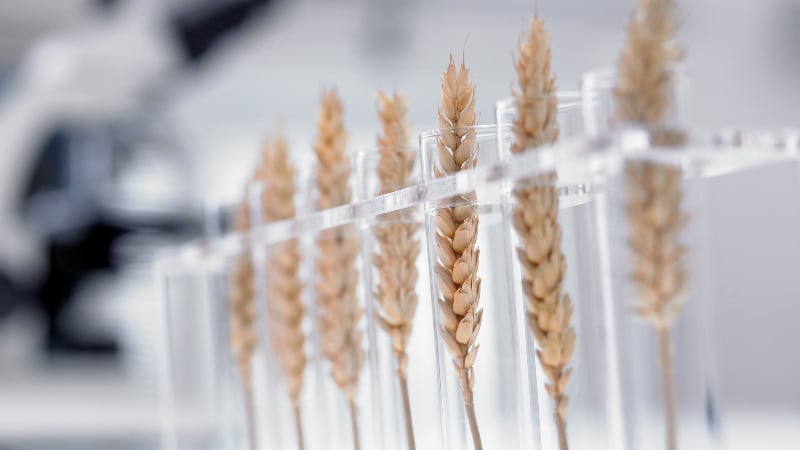According to FAO, iron and zinc deficiencies are the most common MND globally, affecting pregnant women (38%) and children under 5 years old (43%).
Wheat, a dietary staple throughout the world, is a preferred vehicle for fortification, particularly for essential micronutrients such as iron, zinc, and calcium.
While many studies have looked into enhancing iron and zinc content in wheat, there remains a scarcity of comprehensive data on the bioavailability of these nutrients and their impact on human health.
Therefore, a group of researchers from India and Turkey conducted a systematic review to examine the latest wheat biofortification approaches, effects of biofortified wheat on health outcomes, and more.
It was found that fortification has indeed increased the consumption of nutrients such as iodine, iron, folate, and vitamin A worldwide. However, more than 80 developing countries have not embraced fortification in any potential food vehicles, including wheat flour.
“Although about 85 other countries have established mandatory wheat flour fortification programmes with effective implementation, it is noteworthy that fortified flour may undergo various physiochemical changes and alterations in physical and sensory attributes, which could affect consumer acceptability.
“Conversely, biofortification has emerged as an efficient, sustainable and cost-effective way to ameliorate MND-associated health outcomes with reduced mortality and morbidity in resource-poor nations. Owing to its inherent superiorities over fortification, it has broader applicability in nutritionally deprived regions, especially Africa and Asia,” the authors wrote.
Biofortification is defined as a method that increases nutrient levels in crops during plant growth, unlike conventional fortification where micronutrients are added during the crop-processing stage.
Based on the findings, biofortified crops, including orange, sweet potatoes, maize, sorghum, lentils, pearl millet, and wheat, have been released in different parts of the world, providing a range of micronutrients to populations who do not have access to other interventions.
“For every dollar invested in biofortification, as much as US$17 of benefits may be gained sustainably, which is far better than the fortification strategy.
“Moreover, once biofortified wheat cultivars are under a farmer’s field, recurrent expenditures for monitoring and maintenance are minimal. After fulfilling the household’s needs, the surplus can be sold to retail outlets in the urban and suburban areas.”
Enhancing bioavailability of nutrients
The primary objective of wheat biofortification programmes is to increase iron and zinc content in wheat grains. Yet, the efficacy of these programmes hinges on the bioavailability of iron and zinc in the enriched grains, as these nutrients must be readily absorbed by the body to be nutritionally beneficial.
Data indicate that despite wheat’s prominence in the diets of many, it falls short of meeting recommended daily allowances for iron and zinc. This inadequacy is attributed to variations in iron and zinc levels among different wheat genotypes, as well as the presence of phytic acid and other antinutritional factors that can reduce their bioavailability by up to 15%.
Dietary components, including histidine, cysteine ligands, tripeptides, and endogenous ligands such as citric acid, have been shown to enhance the absorption of zinc in the body.
On the other hand, iron and zinc absorption are both inhibited by substances with similar chemical properties, including phytic acid, oxalate, and polyphenols.
“Developing dietary compositions with a higher ratio of enhancers to inhibitors is a promising avenue to enhance mineral bioavailability.
“Altering the levels of enhancer substances in plants is relatively straightforward since it involves only a few regulating genes, in contrast to breeding for higher iron and zinc levels, which is a complex process influenced by numerous genes and environmental factors.”
As limited reports suggest that food-processing methods like heat treatment can create zinc complexes resistant to hydrolysis, thus affecting its absorption, further research is needed to confirm the inhibitory effect of elevated temperatures on mineral absorption.
“Practices such as soaking and fermentation may significantly improve mineral absorption, as they partially hydrolyse phytic acid into metabolites with reduced zinc-binding capacity and lower inhibitory effects.
“It is advisable for food scientists, wheat breeders, and molecular biologists to collaborate in developing strategies that manipulate dietary composition, and enhance iron, zinc, and phytase levels while reducing phytic acid content,” said the researchers.
Access to biofortified foods
A number of randomised controlled trials have evaluated the nutritional effects of biofortified wheat, with majority of them conducted in Asian and African countries due to the amount of undernourished population compared to other regions.
These studies conclude that, irrespective of intervention, there is significantly higher zinc absorption (by 70 to 76%) in humans, with no effect on extraction rate.
In addition, extensive research efforts across agronomic, genetic and conventional breeding, molecular and transgenic techniques, and microbial interventions, have gleaned substantial insights into wheat biofortification.
Importantly, this has culminated in the development and commercial cultivation of 40 biofortified wheat varieties in India, Pakistan, Bangladesh, Mexico, Bolivia, and Mexico.
To expand biofortification, the researchers said that a robust strategy to raise awareness and carry out coordinated implementation among stakeholders is key.
“It is imperative for R&D organisations to advance wheat biofortification through increased investment, while conducting evidence-based assessments to elucidate the benefits of biofortification. Global regulatory authorities should harmonise frameworks, particularly in the area of clinical trial protocols spanning multiple countries.
“Furthermore, local governments should play a facilitating role in enhancing access to biofortified wheat, especially in countries grappling with persistent undernutrition and food shortages. For instance, providing biofortified wheat seeds to farmers can promote widespread adoption, and offering financial incentives for biofortified crop yields can further stimulate uptake.”
At the same time, nutrient profile-based food labelling and nutrition awareness campaigns could drive consumer demand and consumption of biofortified wheat.
“Incorporating biofortified combo packs, such as combinations of wheat and legumes, into national nutrition or safety net programmes, can also unlock the potential benefits of biofortification,” the researchers added.
Source: Frontiers
https://doi.org/10.3389/fnut.2023.1310020
“Critical assessment of wheat biofortification for iron and zinc: a comprehensive review of conceptualization, trends, approaches, bioavailability, health impact, and policy framework”
Authors: Om Prakash Gupta, et al





